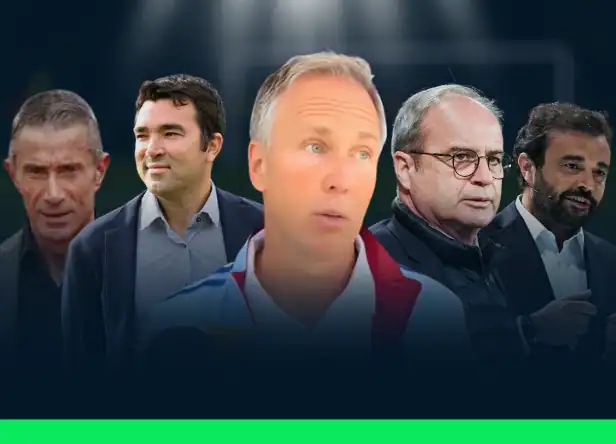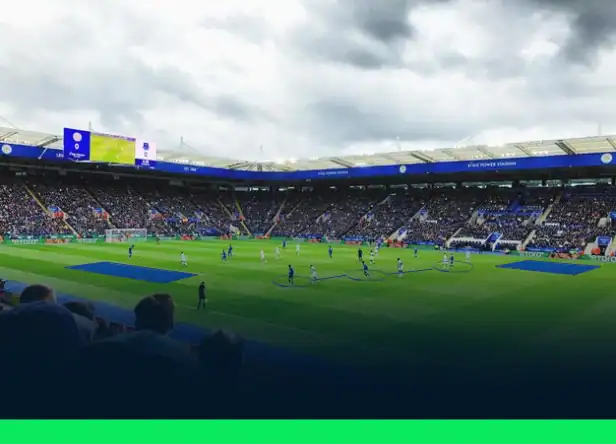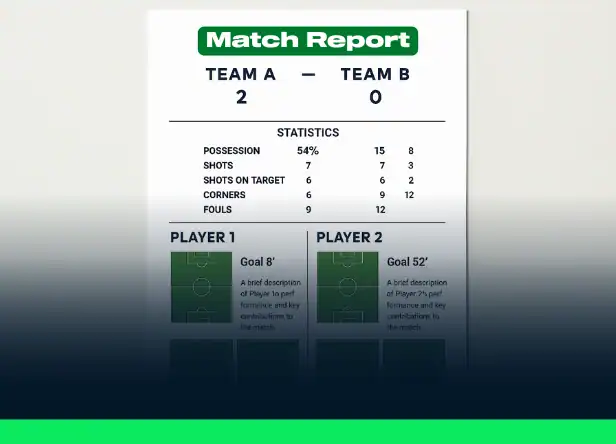Soccer reigns as the world’s preeminent sport, captivating billions of fans across continents. Its global commercial success has transformed it into a multi-billion-dollar industry where relentless financial pressure and demand for silverware compel every stakeholder to pursue excellence relentlessly. This quest for peak performance has given rise to a plethora of specialized careers supporting clubs and players both on and off the pitch.
In the United States alone, soccer generates a gross output of $30.5 billion, contributes an estimated $17.2 billion to GDP, and sustains nearly 185,000 full-time jobs, according to a 2025 joint report by FIFA and the WTO. The soccer-entertainment economy presents myriad career trajectories for enthusiasts who wish to turn their passion into profession. Below, we explore the key roles that drive the soccer landscape.
Professional Player
The players—two teams of 11, including a goalkeeper, competing for success—are at the core of every game. Many kids aspire to wear professional jerseys, but only a chosen few have top-tier contracts.

Pathways to the Pro Ranks
- Usually, American professionals come out from NCAA programs and the MLS SuperDraft.
- Graduates of academies, from where more and more, young talents forego college and go through MLS academies or semi-professional groups in the USL Championship and USL League One.
- Clubs look worldwide and enlist foreign schools and men’s national youth teams in international recruitment.
Compensation Structure
Even in lower-division US leagues, soccer has shed its part-time myth. While some players supplement their income with sponsorship-linked side engagements, full-tiand me training and match commitments are the norm.
MLS salaries can be extremely high for international stars, with Lionel Messi leading the way in 2025, earning over $20 million per year—a record for American soccer.
MLS’s top-earners in 2025 illustrate the financial heights attainable:
| Player | Club | Guaranteed Salary (USD) |
|---|---|---|
| Lionel Messi | Inter Miami | $20,446,667 |
| Lorenzo Insigne | Toronto FC | $15,400,000 |
| Sergio Busquets | Inter Miami | $8,774,996 |
| Miguel Almirón | Atlanta United | $7,871,000 |
| Hirving Lozano | San Diego FC | $7,633,333 |
| Federico Bernardeschi | Toronto FC | $6,295,381 |
| Emil Forsberg | New York Red Bulls | $6,035,625 |
| Jordthe i Alba | Inter Miami | $6,000,000 |
| Riqui Puig | LA Galaxy | $5,779,688 |
| Jonathan Bamba | Chicago Fire | $5,581,806 |
| Hany Mukhtar | Nashville SC | $5,311,667 |
| Christian Benteke | D.C United | $4,937,500 |
| Alex Miranchuk | Atlanta United | $4,885,441 |
| Evander | FC Cincinnati | $4,736,411 |
| Carles Gil | New England | $4,702,083 |
| Luciano Acosta | FC Dallas | $4,296,413 |
| Joseph Paintsil | LA Galaxy | $4,182,000 |
| Emmanuel Latte Lath | Atlanta United | $4,030,546 |
| Luis Muriel | Orlando City | $4,003,333 |
| Kévin Denkey | FC Cincinnati | $3,810,000 |
Despite these lucrative figures, the average professional career spans just 10 years, after which many players segue into off-field roles to maintain their connection with the sport.
Soccer Coach
The coach has the challenging role of leading the team. During the week, they organize and run training sessions. On match days, they select the starting lineup and coach from the sidelines.
Depending on the level, coaches are supported by a staff who help with different aspects of the job. Club goals vary, which may lead the coach to focus on:
- Developing young players
- Creating entertaining, offensive soccer to attract fans
- Achieving results to maintain league position or secure promotion
- Supporting the squad physically and mentally to reach peak performance
Coaches are hired by clubs through the sporting director. They are responsible for implementing the club’s sporting philosophy. It’s a demanding job requiring total commitment: coaches live and breathe soccer, with very little time off.
For a long time, coaching in MLS and U.S. soccer was reserved for former professional players. It was commonly believed you had to have played at a high level to coach. However, recent examples show there are now many viable paths into coaching.
MLS and U.S. Soccer have implemented structured coaching programs, including certifications for professional-level management, ranging from basic licenses to advanced degrees in sports leadership.
MLS coaches now come from diverse backgrounds—some studied sports science, coaching, or sports management in college, while others worked their way up through youth academies and clubs.
There is no complete public source listing MLS coaches’ salaries. However, MLS coaches are among the highest-paid in North American soccer, with salaries ranging from several hundred thousand to multiple millions annually. For instance, Bob Bradley (Toronto FC) and Tata Martino (Inter Miami) are reportedly earning several million dollars per year.
Professional teams often surround their head coaches with extensive staff: fitness traienrolphysios, mental coaches, and assistants.
Youth Soccer Coaches
In amateur teams—whether community clubs or youth academies affiliated with professional teams—youth soccer coaches are responsible for guiding and developing young players. They run training sessions throughout the week with their teams. On weekends, they coach the team during matches, tournaments, and local competitions.

However, the main goal of youth coaches is not necessarily to win immediately! Their priority is the technical, tactical, and personal development of players and the overall progress of the team throughout the season. Playing well and winning are often natural outcomes of effective coaching. Youth coaches prioritize:
- Technical mastery: ball control, passing patterns, first touch.
- Tactical understanding: age-appropriate formations and decision-making.
- Holistic development: fostering teamwork, confidence, and discipline.
Youth coaches are typically hired by the club or academy management and oversee teams grouped by age. They usually start working with the youngest players to gain experience before moving on to older or more competitive teams.
To become a youth soccer coach in the U.S., individuals commonly pursue certifications offered by U.S. Soccer Federation, which provides coaching licenses at various levels. Many also come through college programs related to sports, coaching, or sports management.
People choose to become youth coaches for many reasons, with a passion for soccer often at the forefront. Many aspiring coaches begin by working with youth players to gain practical experience. Additionally, some amateur or semi-professional players take on youth coaching roles to share their skills and supplement their income.
Youth soccer coach salaries vary widely based on the club, region, and level of responsibility. Many coaches volunteer or receive stipends near minimum wage. At larger or more established academies, coaches can earn anywhere from a few thousand to several thousands of dollars per year, depending on experience and duties.
Club Scout
Scouts may attend five or six matches in a single weekend. They often speak with players and staff off the field to better understand a player’s mindset or to hear about personalized training plans.
Scouts also need strong writing skills to produce clear, professional reports. Technical directors receive dozens of reports each week, so it’s important for scouts to highlight key takeaways efficiently.
Online courses are available to help you learn the profession. This career suits soccer enthusiasts who understand the game and can identify players that fit into a team’s collective strategy.
You must be willing to travel and build a network with coaches, which also enhances your scouting effectiveness.
Scout salaries range from $26,000 up to more than $150,000 at the biggest clubs. Since buying and selling players is a major part of the soccer economy, many scouting agencies now operate across different regions.
Video Analyst
A relatively new role, video analysis is becoming widespread. With every match broadcast—either on TV or online—there is now a massive amount of footage available.

A video analyst is like a scout who watches games on digital platforms (rather than in person) and produces reports for coaches or technical directors, including:
- Opposition analysis: breaking down opponent tendencies, set-piece patterns, and pressing triggers.
- Self-scouting: identifying team errors, analyzing heat maps and passing networks.
- Prospect profiling: evaluating target players through data-driven metrics.
One of the key skills of a video analyst is data handling. By compiling individual and team statistics, they can organize insights and provide useful reports to staff.
These reports help staff save time, pinpoint issues, and prepare the team more effectively.
To become a video analyst, you can pursue a university degree or enroll in online certification programs.
Just like scouts, video analyst salaries vary depending on the club’s size and status. Top-tier teams pay well for elite talent who can help identify the next big stars.
Player Agent
A major role in the soccer ecosystem, the player agent handles negotiations and contract terms between clubs and sought-after players. With high financial stakes for both sides, agents act as critical intermediaries.

Agents can be hired by players or clubs. They represent their client during negotiations and provide advice in their best interest.
Some former professional players become agents after retirement, using their experience to guide younger players. Most agents, however, come from sales or business backgrounds—combining their love of soccer with a commercial career.
The profession is heavily regulated. To become a licensed agent, you must pass a FIFA-approved exam.
Agents earn between 3% to 10% of the player’s negotiated salary. For a star transfer, the commission can be significant. For standard players, the amount is lower. To earn a living, agents usually manage several players and aim to close a few deals each year.
Here’s a table showing a few top players in MLS and estimated commissions per contract:
| Player (Club) | Monthly Salary (USD) | Contract Length (Years) | Estimated Commission (USD) |
|---|---|---|---|
| Lionel Messi (Inter Miami) | 1,703,889 | 2.5 | 2,562,000 |
| Lorenzo Insigne (Toronto FC) | 1,283,333 | 2 | 1,540,000 |
| Sergio Busquets (Inter Miami) | 731,250 | 2 | 875,000 |
| Miguel Almirón (Atlanta United) | 655,917 | 2 | 785,000 |
| Hirving Lozano (San Diego FC) | 636,111 | 2 | 762,000 |
| Federico Bernardeschi (Toronto FC) | 524,615 | 2 | 625,000 |
| Emil Forsberg (New York Red Bulls) | 502,969 | 2 | 600,000 |
| Jordi Alba (Inter Miami) | 500,000 | 2 | 600,000 |
| Riqui Puig (LA Galaxy) | 481,641 | 2 | 580,000 |
| Jonathan Bamba (Chicago Fire) | 465,150 | 2 | 560,000 |
To steady income streams, agents sometimes manage many customers, closing a few transactions every transfer period.
Alternative Career Paths
Besides these basic responsibilities, the soccer ecosystem provides a number of specialized applications:
Nutritionist and Sports Scientist
This profession helps in developing conditioning programs to maximize player performance and injury prevention. Professional nutritionists role is to provide personalized diet programs based on metabolic testing and playing schedules.
Physical Therapist and Sports Medicine Practitioner
Professional therapist and medical practitioner create new programs for injured players’ rehabilitation using advanced modalities like cryotherapy and hydrotherapy. Their job also includes – in-match medical assistance, including concussion procedures.
Strength and Conditioning Coach
Conditioning coach supervise the periodized fitness cycles and weight-room programmes of players. Their role also includes monitoring workload using heart-rate metrics and GPS tracking.
Club Sales and Business Activities
Activities that includes sponsorship revenues, matchday marketing, and fan engagement plans falls under the business activities. Digital content development: social media, club websites, and streaming services, etc.
Stadium & Event Administration
Matchday logistics: ticketing, security, and hospitality, etc are managed by the administrator. Venue operations comprising pitch maintenance and broadcast coordination.
Commentary, Broadcast Production, Journalism
Commentary match for television, radio, content creation and streaming services are one of the most important function of this beautiful game that is managed by the professional journalist or from the production house. Reporting, analysis, and long-form articles for print and online media comprise written journalism and it is one of the most.
Statistical Data Scientist
Developing player performance and injury risk predictive models is what a statistical Data Scientist do. Sophisticated analytics knows that how to generate return-on-investment by taking appropriate measures and transfer valuation.
Navigating the Soccer Career Terrain
Commonly, one moves from on-field to off-field positions. Important advice for would-be professionals:
- Relevant degrees (sports management, exercise science) and sector certifications (USSF licenses, FIFA agent examination) are sought after education and certifications.
- Volunteer at nearby groups, do internships with pro academies, or follow seasoned professionals for practical experience.
- Network: Use LinkedIn, coaching events, and agent seminars to establish connections.
Continuous Learning: Remain abreast of tactical trends (e.g., gegenpressing, positional play) and technical developments including machine learning in scouting and GPS-based fitness monitoring.
Conclusion
From grassroots pitches to multi-million-dollar stadiums, the soccer sector’s enormous reach presents many of professional chances far beyond the playing field. Soccer provides a dynamic professional environment whether your passion is in tactical coordination, talent identification, athlete wellness, or the business mechanisms of the game. With dedication, education, and strategic networking, aficionados may carve out fulfilling careers in the most popular sport in the world.





